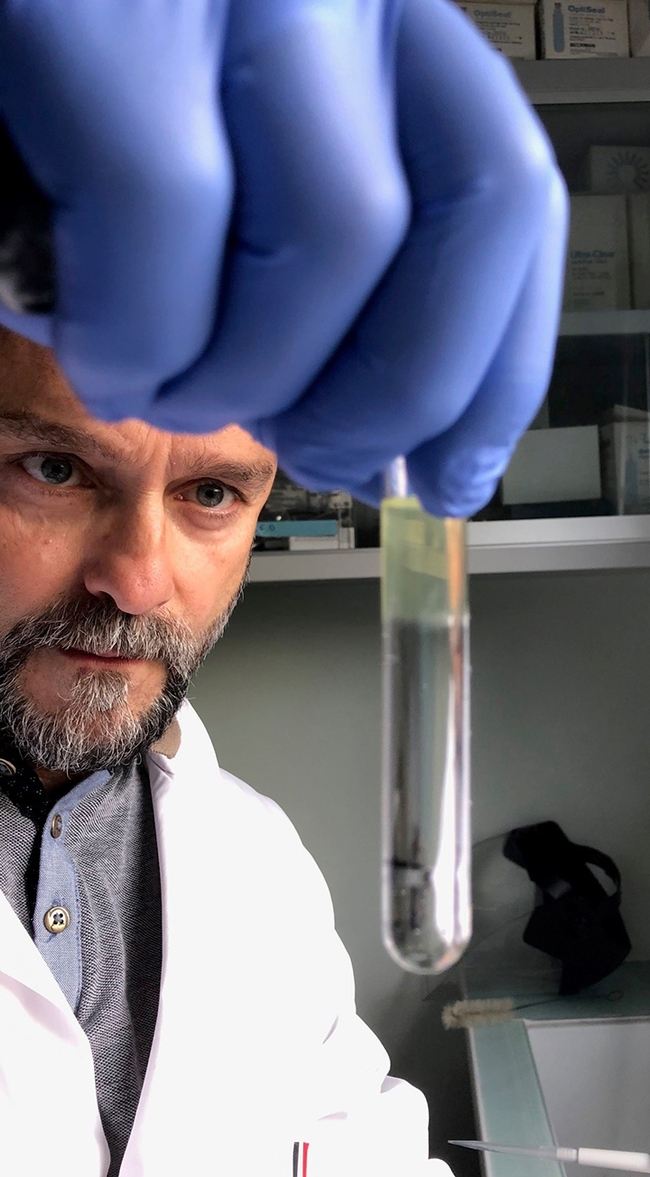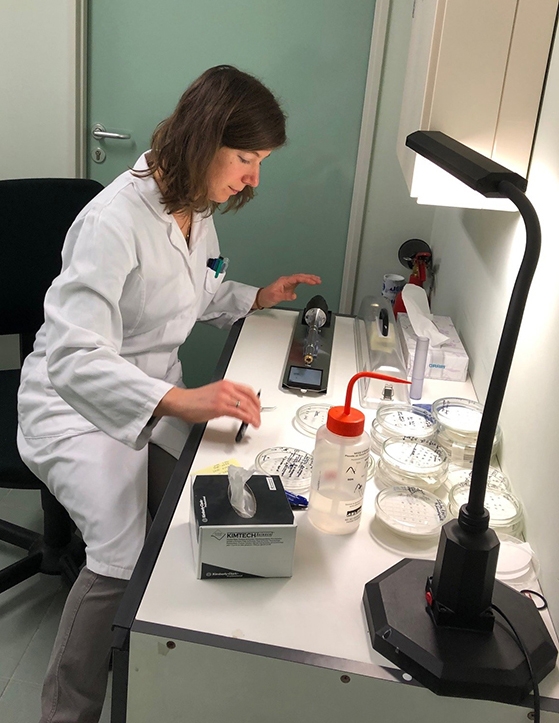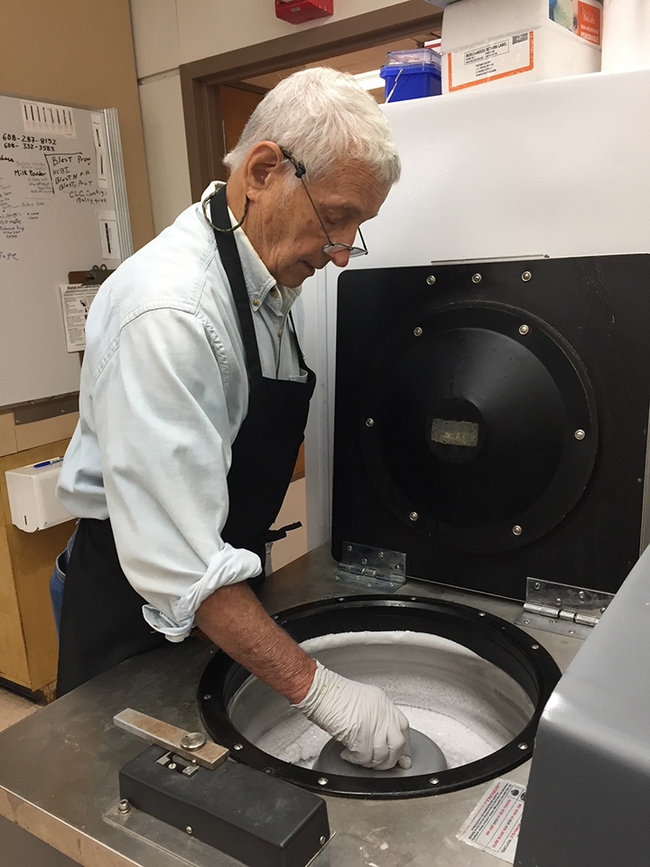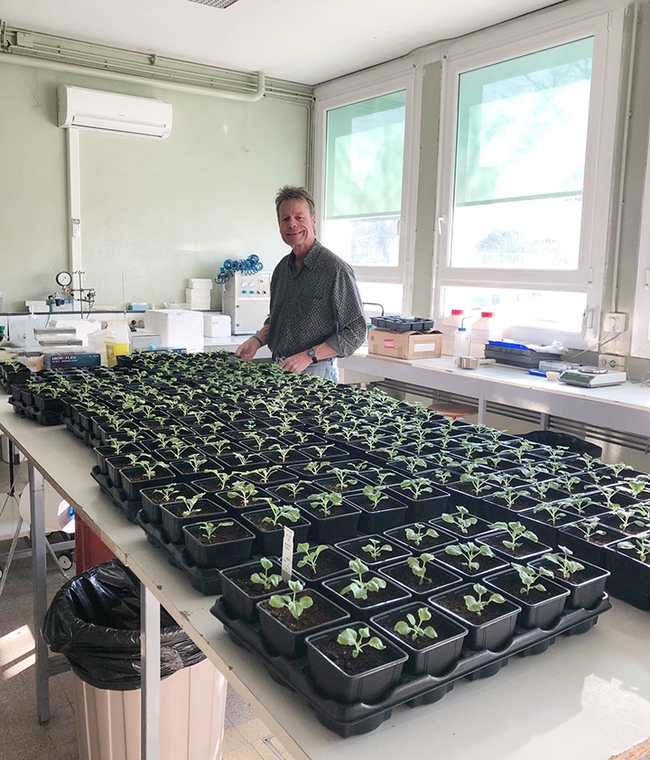- Author: Kathy Keatley Garvey

It did: their research revealed how TSWV (family Tospoviridae, order Bunyavirales) packages its RNA genome, a crucial step in virus infection.
Their newly published research, “The Genome of a Bunyavirus Cannot be Defined at the Level of the Viral Particle But Only at the Scale of the Viral Population,” appears in the current edition of the Proceedings of the National Academy of Sciences (PNAS).
The 18-member research team included scientists primarily from the French National Research Institute for Agriculture, Food and Environment (INRAE) at the Campus International de Baillarguet, Montpellier; Department of Entomology, University of Wisconsin; and the Department of Entomology and Nematology, University of California, Davis.
“Our work showed the genome of TSWV can only be defined at the population level, pointing at emerging properties when viral particles infect plants in groups,” said a key author Stéphane Blanc, research director of INRAE's Biology and Genetics of Plant-Pathogen Interactions. “As most virions contain an incomplete genome, TSWV is a multi-component viral system, where co-infection and complementation are key in the life cycle. These findings open a myriad of possibly distinct properties depending on the genetic composition of the group of virions co-infecting a cell.”
“The most challenging part of this work was to create a protocol reliably quantifying the two polarities of each segment,” said lead author Michel Yvon of INRAE. “The next important advance will be to demonstrate that co-infection of cells by a group of particles is key to the spread of infection.”
Ullman, an international authority on orthotospoviruses and one of the four main authors, took a sabbatical to work on the project. “My interest was in understanding how TSWV packaged its RNA genome,” she said. “While this sounds like a simple goal, it is quite complex because TSWV has negative sense and ambisense viral strands and many research tools common to studying other viruses, such as infectious clones were not available.”

“It was a delight to work with the fantastic team of scientists that Stéphane assembled, all very talented with skills in virology, cryoelectron microscopy and nanopore PCR,” Ullman commented. “I cannot imagine a more talented and diverse group of people to conduct this difficult work. I learned a great deal about virus purification from Michel Yvon, whose leadership, skills in virology, and patient teaching really moved our project forward."

German, professor emeritus and former chair of both the Departments of Plant Pathology and Entomology at the University of Wisconsin, died Aug. 27, 2023 at age 82.
“I am indebted to my husband, Jean-Marc Leininger who frequently drove me to the laboratory in Avignon where I was able to rear thousands of virus-infected plants and to store TSWV isolate,” Ullman added. “Jean-Marc not only transported me and my virus specimens, but also learned to mechanically inoculate plants and helped with every inoculation and virus harvest.”
UC Davis postdoctoral scholar Sulley Ben-Mahmoud of the Ullman lab was among the co-authors.
Funding was provided by grants from Montpellier University of Excellence (MUSE); Floriculture and Nursery Research Initiative, U.S. Department of Agriculture, Agricultural Research Service (USDA-ARS); and the Fulbright Scholar Program. The authors also acknowledged support from
- Santé des Plantes et Environnementor Plant Health and Environment (SPE)
- Centre National de la Recherche Scientifique (CNRS)
- Institute of Research for Development (IRD)
- Institut national de la santé et de la recherche médicale (INSERM)
- Centre for International Cooperation in Agronomic Research for Development (CIRAD)
- Plant Health Institute of Montpelier (PHIM)

Ullman noted the importance of the research in her Fulbright application: “Sustainable management of insect-transmitted pathogens is a key concern for food production in France and the United States. Both countries grow many of the same crops and growers face similar challenges from insect-transmitted plant viruses. Current management strategies rely heavily on pesticides that may cause significant health and environmental concerns, including damage to bees and other pollinators, as shown with neonicotinoid pesticides. Clearly, better knowledge about these insect-transmitted viral systems…has potential to reduce pesticide use by providing novel and innovative technologies to manage orthotospoviruses and thrips in France and the United States.”
Ullman, a former chair of the Department of Entomology and a former associate dean of the UC Davis College of Agricultural and Environmental Sciences, anticipates strong research relationships between UC Davis and Montpellier that will lead to grant applications for international research and scholarly exchange opportunities for scientists, students, and post-doctoral scholars.
Significance
In their significance statement, the authors wrote: “Bunyaviruses infect animals, plants, fungi, and protists. Despite their importance, fundamental aspects of their biology as basic as the definition of their genome remain elusive. The viral genome consists of several negative or ambisense RNA segments, and virions often miss segments and/or package complementary strands. We formally quantify this heterogeneity on the species Tomato spotted wilt orthotospovirus. Within individual virus particles, the number, the identity, and the polarity of the segments are widely variable. In contrast, we show that a stable genetic composition is an emerging property of the viral population, each of the RNA segments/polarities accumulating reproducibly at a specific frequency. This resembles the genome formula of multipartite viruses, suggesting that bunyaviruses may also function as multicomponent viral systems.”

Their abstract: “Bunyaviruses are enveloped negative or ambisense single-stranded RNA viruses with a genome divided into several segments. The canonical view depicts each viral particle packaging one copy of each genomic segment in one polarity named the viral strand. Several opposing observations revealed nonequal ratios of the segments, uneven number of segments per virion, and even packaging of viral complementary strands. Unfortunately, these observations result from studies often addressing other questions, on distinct viral species, and not using accurate quantitative methods. Hence, what RNA segments and strands are packaged as the genome of any bunyavirus remains largely ambiguous. We addressed this issue by first investigating the virion size distribution and RNA content in populations of the tomato spotted wilt virus (TSWV) using microscopy and tomography. These revealed heterogeneity in viral particle volume and amount of RNA content, with a surprising lack of correlation between the two. Then, the ratios of all genomic segments and strands were established using RNA sequencing and qRT-PCR. Within virions, both plus and minus strands (but no mRNA) are packaged for each of the three L, M, and S segments, in reproducible nonequimolar proportions determined by those in total cell extracts. These results show that virions differ in their genomic content but together build up a highly reproducible genetic composition of the viral population. This resembles the genome formula described for multipartite viruses, with which some species of the order Bunyavirales may share some aspects of the way of life, particularly emerging properties at a supravirion scale.”




